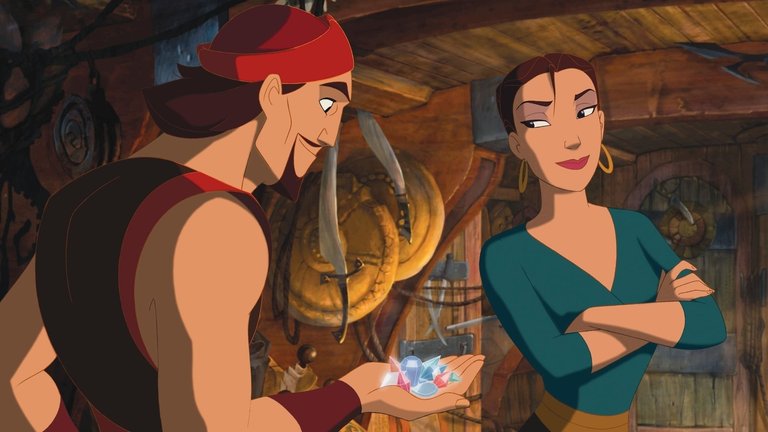Film Review: Sinbad: Legend of the Seven Seas (2003)

The recent uproar over Netflix, BBC and video game developers altering the race, gender, and ethnicity of beloved characters relates to something that is hardly new. This practice has been a staple of Hollywood for decades, albeit with motivations different from today’s “woke”-inspired drive to diversity. In the past, these changes were often made for commercial reasons, catering to the biases and chauvinistic attitudes of the target audience. A prime example of this is the 2003 animated fantasy film Sinbad: Legend of the Seven Seas.
The plot follows the adventures of Sinbad (voiced by Brad Pitt), a legendary sailor, as he embarks on a perilous journey to save his friend Prince Proteus (voiced by Joseph Fiennes), ruler of Syracuse, from the trouble caused by the goddess Eris (voiced by Michelle Pfeiffer). She has stolen magical Book of Peace while impersonating Sinbad and Proteus, as a true friend, offers himself as hostage that would be executed if Sinbad fails in his mission to retreive the artifact. Sinbad’s crew is joined by Lady Marina (voiced by Catherine Zeta Jones), Proteus’ fiancee who proves to be feisty and independent-minded woman.
Produced by Dreamworks SKG with a budget of $60 million, Sinbad was one of the studio's more ambitious projects at the time. However, its release coincided with the 9/11 attacks and the subsequent US-led invasions and occupations of Muslim and Arab countries. Suddenly, the character of Sinbad, who had originated in Arabian Nights, became an inconvenient protagonist. To avoid any potential backlash, the producers decided to "retcon" Sinbad into a character with no connection to the Middle East or Islam. The story was transplanted to a mythical Ancient Greece, with a passing reference to Fiji, an archipelago that would not be discovered and populated by humans for another two millennia. This anachronistic setting was likely intended to signal to the audience that the film should not be taken too seriously.
From a technical standpoint, Sinbad is a solid film. The combination of computer and traditional 2D animation under competent direction of Tim Johnson and Patrick Gilmore, yields some exciting and imaginative action sequences. The script, written by John Logan, tries, and for the most part succeeds, to strike a balance between a simple, family-oriented film and something that can be enjoyed by an older audience. However, at the end too many compromises are made and older viewers are likely to view the effort as bland and ultimately forgettable.
The audience seemed to agree, and Sinbad, which faced stiff competition among the 2003 summer blockbusters, proved to be a massive flop. As a result, Dreamworks abandoned 2D animation and shifted its focus entirely to computer animation. Sinbad thus earned its place in cinema history, albeit not in a positive light.
RATING: 5/10 (++)
Blog in Croatian https://draxblog.com
Blog in English https://draxreview.wordpress.com/
InLeo blog https://inleo.io/@drax.leo
Hiveonboard: https://hiveonboard.com?ref=drax
Rising Star game: https://www.risingstargame.com?referrer=drax
1Inch: https://1inch.exchange/#/r/0x83823d8CCB74F828148258BB4457642124b1328e
BTC donations: 1EWxiMiP6iiG9rger3NuUSd6HByaxQWafG
ETH donations: 0xB305F144323b99e6f8b1d66f5D7DE78B498C32A7
BCH donations: qpvxw0jax79lhmvlgcldkzpqanf03r9cjv8y6gtmk9
Posted Using InLeo Alpha